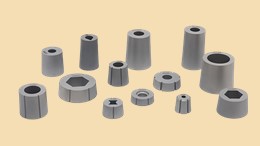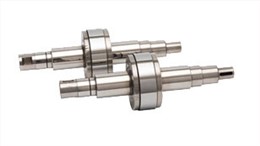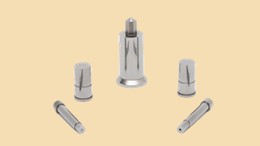Introduction
The manufacture of tungsten carbide tools and materials is a highly specialized process that requires precision, consistency and adherence to strict technical specifications. Tungsten carbide, often referred to as "cemented carbide," is a composite material consisting of tungsten carbide particles bonded to a metallic binder, typically cobalt. Due to its exceptional hardness, wear resistance, and high temperature stability, it is widely used in industries such as automotive, aerospace, tooling, and manufacturing. However, the complexity of its production - involving powder metallurgy, sintering, machining, and quality control - creates challenges that can only be mitigated by a well-structured quality management system (QMS). This article examines how the implementation of a comprehensive QMS can benefit manufacturers of cemented carbide tools and materials, focusing on operational efficiency, customer satisfaction, risk mitigation, and long-term competitiveness.
1. Ensuring Consistency of Material Properties
The Science of Tungsten Carbide Production
The performance of tungsten carbide depends on precise control of its microstructure, including grain size, cobalt binder distribution and porosity. Variations in raw material quality, mixing ratios, sintering temperatures, or cooling rates can result in defects such as microcracking, uneven hardness, or reduced density. These defects affect the durability and performance of the final product in demanding applications such as metal forming, injection molding or cutting tools.
A QMS framework, such as ISO 9001 or IATF 16949, requires systematic documentation of each stage of production. For example:
·Raw material inspection:Protocols for verifying the purity and particle size distribution of tungsten carbide powders and cobalt binders.
·Process Controls: Real-time monitoring of sintering furnaces to ensure temperature uniformity (±5°C tolerance) and controlled atmosphere conditions.
·Statistical Process Control (SPC):Data-driven analysis to detect deviations in hardness (e.g., Rockwell C scale) or density (g/cm³) early in production.
By standardizing these processes, manufacturers reduce batch-to-batch variability and ensure that each mold or material meets pre-defined specifications. This consistency is critical for industries such as automotive, where a single defective insert in a die casting mold can result in costly line shutdowns.
2.Reduce defects and waste
Cost impact of defects in carbide production
Carbide components are high-value items. A single defective mold blank can cost thousands of dollars in material and labor losses, not to mention delays in downstream manufacturing processes. Traditional reactive approaches to quality - such as post-production inspection - are insufficient to catch defects early.
A proactive QMS integrates tools such as Failure Mode and Effects Analysis (FMEA) and Advanced Product Quality Planning (APQP) to anticipate risks. For example:
·FMEA for sintering: Identify potential failure modes (e.g., carbon loss during sintering) and implement countermeasures such as optimized debinding cycles.
·Lean manufacturing principles: Reduce material waste by improving yields in powder compaction or CNC machining operations.
Industry case studies show that companies using a QMS-driven approach can reduce defect rates by 30-50%, resulting in millions of dollars in annual savings. In addition, reduced scrap rates align with sustainability goals by minimizing the environmental footprint of tungsten mining and processing.
3.Improve customer confidence and market reputation
Meet industry-specific standards
Tungsten carbide tools and materials are often used in mission-critical applications. For example:
·Aerospace: Components must meet AS9100 standards for traceability and fatigue resistance.
·Medical devices: Molds for surgical tools require biocompatibility certification (ISO 13485).
AQMS ensures compliance with these standards through rigorous documentation, audit trails, and supplier qualification programs. Certifications such as ISO 9001 also serve as a mark of credibility, assuring customers of the manufacturer's commitment to quality.
In industries such as automotive, OEMs increasingly require suppliers to submit Production Part Approval Process (PPAP) documentation. A robust QMS streamlines PPAP documentation, including material certifications, process capability studies (Cpk/Ppk), and dimensional reports. This transparency builds trust and positions the manufacturer as a reliable partner for just-in-time (JIT) supply chains.
4.Drive continuous improvement
Data-driven decision making Modern QMS platforms leverage digital tools such as MES (Manufacturing Execution Systems) and AI-powered analytics to collect real-time data from production lines. For carbide manufacturers, this enables:
·Predictive maintenance of sintering furnaces based on thermal performance trends.
· Optimize cobalt content (6-12% by weight) to balance hardness and toughness for specific applications.
Employee Engagement and Training
A culture of quality is reinforced through regular training programs aligned with QMS objectives. Cross-functional teams collaborate on Kaizen initiatives to refine processes, such as reducing CNC grinding cycle times or improving surface finish (Ra ≤ 0.2 µm).
5. Mitigating risks in a global supply chain
Supply chain vulnerabilities
The tungsten supply chain is geographically concentrated, with China controlling over 80% of the world's tungsten reserves. Geopolitical risks, trade disputes, or raw material shortages can disrupt production. A QMS with a Supplier Quality Management (SQM) module ensures dual sourcing strategies and contingency plans.
Regulatory compliance
Tungsten carbide production involves hazardous materials such as cobalt, which is classified as a substance of very high concern (SVHC) under the EU's REACH regulation. A QMS ensures compliance with safety protocols, MSDS (Material Safety Data Sheet) management and waste disposal regulations to avoid legal penalties and reputational damage.
6.A structured QMS facilitates collaboration between R&D and production teams.
For example, the development of gradient structured tungsten carbide (functionally graded materials) for improved thermal shock resistance requires rigorous testing protocols and iterative feedback loops.
Manufacturers serving niche markets-such as microdrills for printed circuit board manufacturing or wear-resistant coatings for the oil and gas industry-benefit from QMS frameworks that manage low-volume production without compromising quality.
Conclusion
In the competitive landscape of carbide tooling and materials manufacturing, a robust quality management system is no longer an option-it is a strategic imperative. From ensuring material consistency to fostering innovation, a well-implemented QMS improves operational efficiency, reduces costs and builds lasting customer relationships. As industries continue to demand higher performance and reliability from carbide components, manufacturers that prioritize quality management will not only survive, but thrive in an increasingly complex global marketplace.
It is for this reason that Changshu ZCCFTungsten Carbidehas been adhering to this ideafrom the past to the present and will continue to do so in the future.


 Ultrafine particle tungsten carbide
Ultrafine particle tungsten carbide Tungsten carbide roll
Tungsten carbide roll Punching die
Punching die Tungsten carbide drawing die
Tungsten carbide drawing die